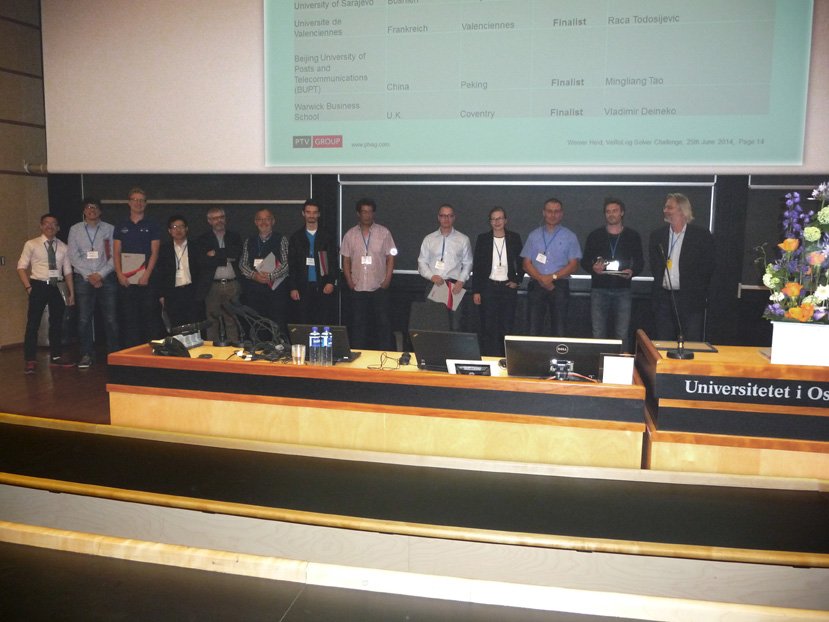The Swap Body Vehicle Routing Problem (SBVRP) is a transportation problem on the basis of the classical vehicle routing problem with a twist: Vehicles may pull trailers, and along with them, swap bodies than can be parked and/ or exchanged (between the trailer and the main vehicle) at specific destinations. In this sense, each vehicle is able to change its configuration on a given route. Parking a swap body comes with the benefit of a reduced fuel consumption, as, obviously, the vehicle becomes lighter. However, parked swap bodies have to be picked up later, and corresponding de-tours must be driven. This results in a problem definition similar (but not identical) to well-known truck-and-trailer VRPs.
VeRoLog Solver Challenge 2014
The SBVRP has been introduced in the VeRoLog Solver Challenge 2014, an implementation challenge of the EURO Working Group on Vehicle Routing and Logistics Optimization. Our approach ranked third in the competition. Follow this link to a press release by PTV Group.

Related key publications
 Sandra Huber and Martin Josef Geiger (2017):
Sandra Huber and Martin Josef Geiger (2017):
Order matters – A Variable Neighborhood Search for the Swap-Body Vehicle Routing Problem.
European Journal of Operational Research Volume 263, Issue 2, December 2017, Pages 419–445, ISSN 0377-2217.
[doi:10.1016/j.ejor.2017.04.046]

Sandra Huber and Martin Josef Geiger (2014):
Swap Body Vehicle Routing Problem: A Heuristic Solution Approach.
In Rosa G. González-Ramírez, Frederik Schulte, Stefan Voß and Jose A. Ceroni Díaz (editors): Computational Logistics: Proceedings of the 5th International Conference (ICCL 2014), Valparaiso, Chile, September 24–16, 2014, Volume 8760 of the Series Lecture Notes in Computer Science, Pages 16–30, Springer International Publishing, ISBN 978-3-319-11420-0. [doi:10.1007/978-3-319-11421-7_2]
Letzte Änderung: 2. Dezember 2017